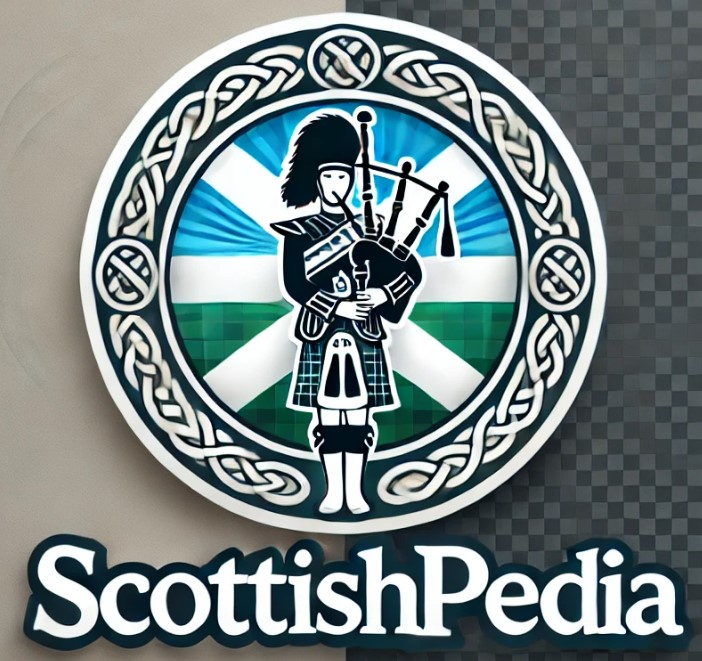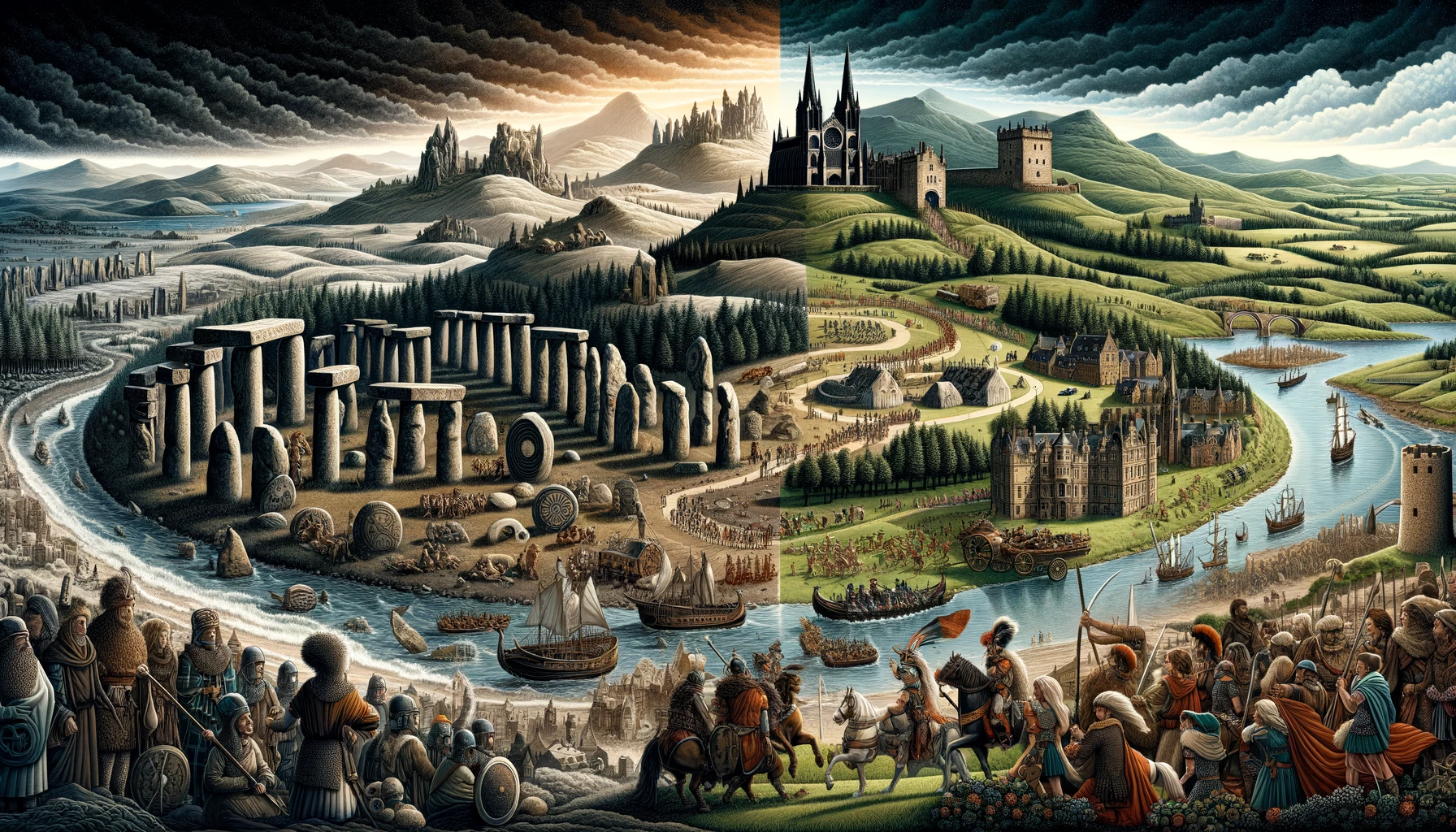Scotland, a land of rugged landscapes and rich cultural heritage, boasts a history that stretches back thousands of years. From the enigmatic standing stones of prehistoric times to the dynamic political landscape of today, Scotland’s journey through time is a tapestry of human endeavor, resilience, and transformation. This article delves into the key periods of Scotland’s history, offering a concise overview of the events and influences that have shaped this remarkable nation.
Prehistoric Scotland: The Dawn of Civilization
The earliest known human presence in Scotland dates back to around 12,000 years ago, during the Mesolithic period. Hunter-gatherers roamed the land, leaving behind traces of their existence in the form of tools and settlements. As the Neolithic era dawned around 4000 BCE, communities began to settle and farm the land, constructing monumental structures like the standing stones at Callanish and the burial cairns at Maeshowe. These enigmatic sites offer a glimpse into the spiritual and social lives of early Scots.
The Bronze and Iron Ages: The Rise of Complex Societies
The transition to the Bronze Age around 2500 BCE brought significant advancements in technology and social organization. Metalworking skills flourished, leading to the creation of intricate jewelry, weapons, and tools. The construction of hill forts and broch towers during the Iron Age (around 800 BCE to 500 CE) signifies a period of increased tribal warfare and societal complexity. The enigmatic Picts, known for their distinctive stone carvings, emerged during this time, leaving a legacy that still fascinates historians today.
Roman Scotland: A Frontier of Empire
Scotland’s encounter with the Roman Empire began in 79 CE when the Romans, under General Agricola, advanced into Caledonia (modern Scotland). Despite their military prowess, the Romans faced fierce resistance from the local tribes, culminating in the construction of Hadrian’s Wall and later the Antonine Wall to secure their northern frontier. Although the Romans never fully conquered Scotland, their presence left a lasting impact, particularly in terms of trade and cultural exchange.
The Early Medieval Period: Kingdoms and Norse Invasions
Following the Roman withdrawal in the early 5th century, Scotland witnessed the rise of several small kingdoms, including the Picts, Scots (from Dalriada), Britons (from Strathclyde), and Angles (from Northumbria). The unification of these diverse groups began in the 9th century under Kenneth MacAlpin, often considered the first King of Scots. This period also saw repeated Norse invasions, which left a profound influence on Scottish culture, particularly in the northern isles and coastal regions.
The High Medieval Period: Wars of Independence
The 13th and 14th centuries were marked by the Wars of Scottish Independence. Edward I of England’s attempts to dominate Scotland met fierce resistance from figures like William Wallace and Robert the Bruce. The Battle of Bannockburn in 1314, a decisive victory for the Scots under Bruce, secured Scotland’s independence for a time. The Declaration of Arbroath in 1320, a letter to the Pope asserting Scotland’s sovereignty, remains a symbol of national pride and identity.
The Renaissance and Reformation: Cultural and Religious Transformations
The Renaissance brought a wave of cultural and intellectual growth to Scotland, exemplified by the founding of the University of St Andrews in 1413. The Reformation in the 16th century, led by figures such as John Knox, transformed Scotland from a Catholic to a predominantly Protestant nation. This religious upheaval had profound social and political ramifications, influencing everything from governance to daily life.
The Union of the Crowns and the Act of Union
In 1603, the Union of the Crowns saw James VI of Scotland ascend to the English throne as James I, uniting the two countries under one monarch. However, it was not until the Act of Union in 1707 that Scotland and England formally merged to create the Kingdom of Great Britain. This union, driven by economic pressures and political maneuvering, was met with both support and resistance in Scotland, sparking debates that continue to this day.
The Enlightenment and Industrial Revolution
The 18th and 19th centuries were periods of immense change and progress. The Scottish Enlightenment, led by intellectual giants like David Hume and Adam Smith, positioned Scotland at the forefront of philosophical and scientific thought. Meanwhile, the Industrial Revolution transformed Scotland’s economy and society, with cities like Glasgow and Edinburgh becoming hubs of innovation and industry. However, this rapid development also brought challenges, including urbanization, social inequality, and labor unrest.
Modern Scotland: Devolution and Renewed Identity
The 20th century saw Scotland navigating the complexities of modern politics and national identity. The devolution movement gained momentum, culminating in the establishment of the Scottish Parliament in 1999. This restored a measure of self-governance and allowed Scotland to address its unique needs and aspirations within the framework of the United Kingdom. The independence referendum in 2014, although resulting in a vote to remain in the UK, highlighted the ongoing debate about Scotland’s future.
Conclusion
From its prehistoric roots to its contemporary political landscape, Scotland’s history is a testament to the resilience and dynamism of its people. The nation has weathered invasions, internal strife, and profound transformations, emerging each time with a renewed sense of identity and purpose. As Scotland continues to navigate its path within the broader context of the UK and the global community, its rich heritage remains a source of inspiration and pride. The story of Scotland is far from over, and the next chapters promise to be as compelling as those that have come before.

